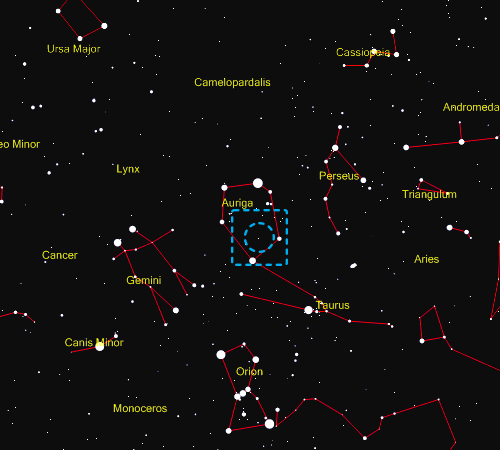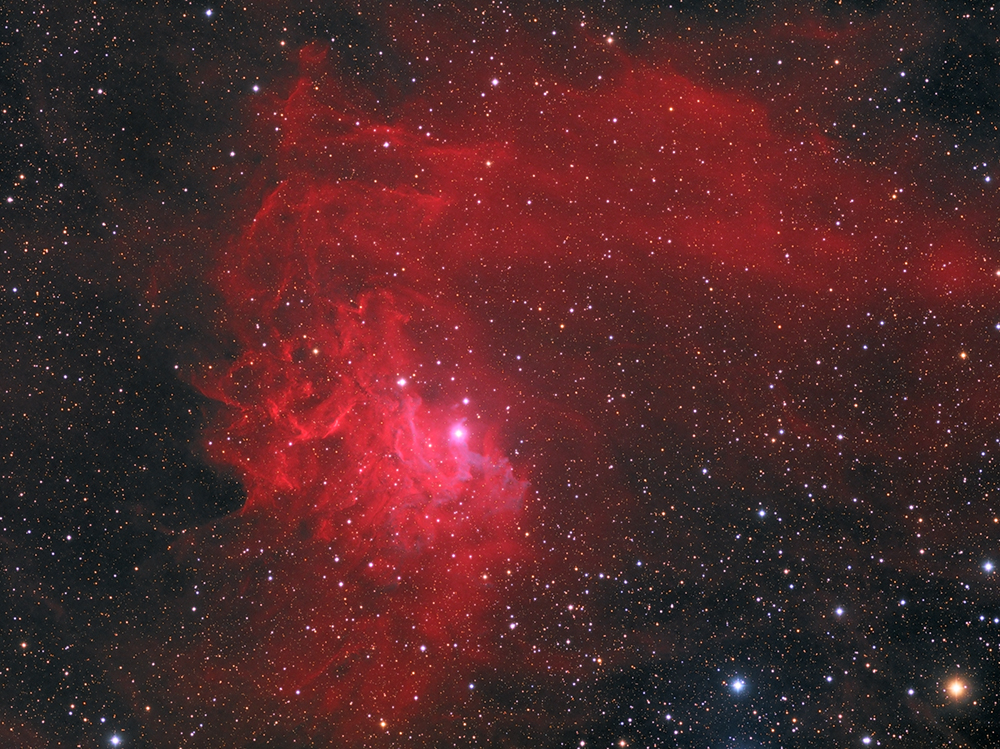NAME:
CATALOGUE:
OBJECT TYPE:
CONSTELLATION:
DISTANCE:
APPARENT MAGNITUDE:
APPARENT SIZE:
DIAMETER:
DISCOVERY:
BEST VIEWED IN:
RIGHT ASCENSION:
DECLINATION:
TELESCOPE:
DATA GATHERED:
EXPOSURES:
TOTAL TIME: |
|
The Flaming Star Nebula
IC 405, C31
Emission and Reflection Nebula
Auriga
1,500 light years
+6
30 x 19 arcminutes
13 light years
1892, John Martin Schaeberle
December
05h 17m 26s
+34º 17’ 05”
Skywatcher Esprit100 ED
11 nights in December 2018 & January 2019
RG = 24 x 300s each
B = 36 x 300s
Hα = 36 x 1800s
25 hours |


